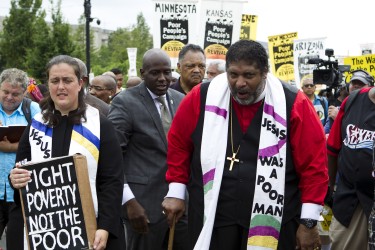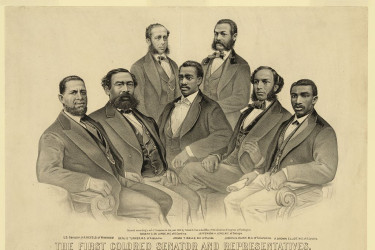I found myself thinking about Julian Bond when the news broke that Georgia had elected its first Black senator, Reverend Raphael Warnock. What a triumph of long-term organizing, of tilling the soil, for this to happen.
In many ways, the path Warnock rode to the Senate began in 1965 when SNCC co-founder Julian Bond mobilized the power of the Black vote to successfully win a seat in the Georgia House of Representatives. Bond’s colleagues refused to seat him because of his opposition to the Vietnam War. He fought them to the Supreme Court and won, and on January 9, 1967, Julian Bond was sworn in.
Warnock and Ossoff’s victories led to a massive outpouring of praise for the leadership of Stacey Abrams and the memory of John Lewis. As visionary as Stacey Abrams is, as courageous as John Lewis was, our desire for charismatic heroes misses how this sort of change happens—as Abrams herself has made clear and Bond would have reminded us.
I had the great fortune of taking a class on the Southern civil rights movement with Julian Bond as an undergraduate and then serving as his teaching assistant a few years later. Part of the goal of the class was to disrupt the stultifying, politically convenient myths—the master narrative—that had grown around the movement. That narrative, he quipped, reduced the movement to “Rosa sat down, Martin stood up, then the white folks saw the light and saved the day.” In this master narrative, charismatic leaders are the key, injustice is obvious, decent people took action, and the good guys triumphed.
Challenging this romanticized and dangerous fable, Bond sought to give us a fuller, more accurate sense of the movement’s origin, of the many local people that made its success, and the variety of its opponents. He also aimed to help us think about the uses behind this mythmaking—to see the ground-shaking challenge to American society and politics the civil rights movement had wrought, its unpopularity at the time, and the tremendous amount of work still to be done.
Here are four lessons I learned from him:
Lesson 1: Movements are made; they don’t just happen. It wasn’t “Rosa Parks sat down and then people boycotted the buses.” His treatment of the Montgomery bus boycott—what led to it, what it took, how it worked—spanned three classes. He started back in the 1930s and 1940s Character by character, he detailed the various people who came together to turn Rosa Parks’s bus stand into the Montgomery bus boycott and how they sustained that effort for 382 days.



















